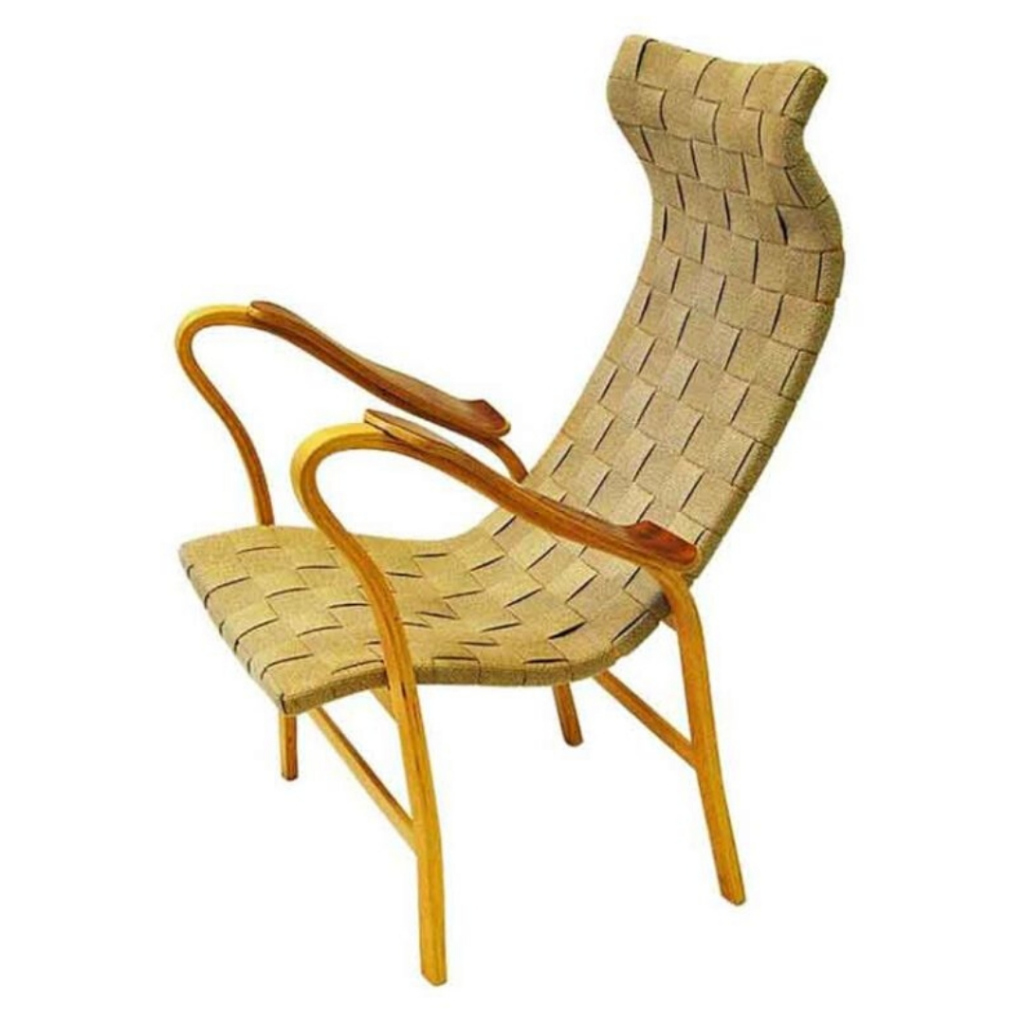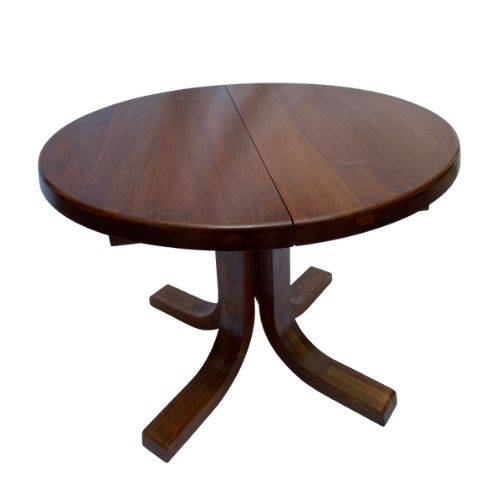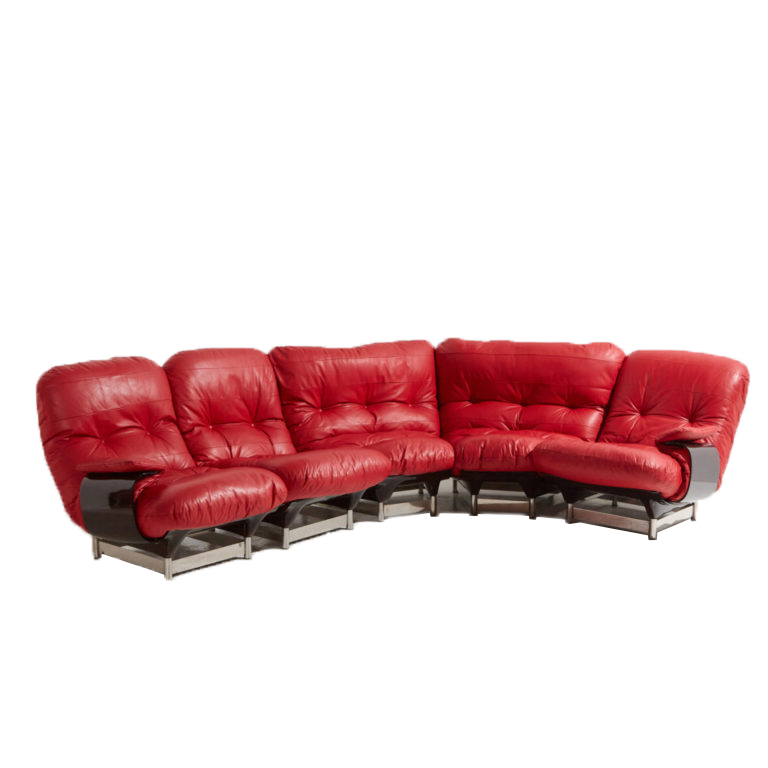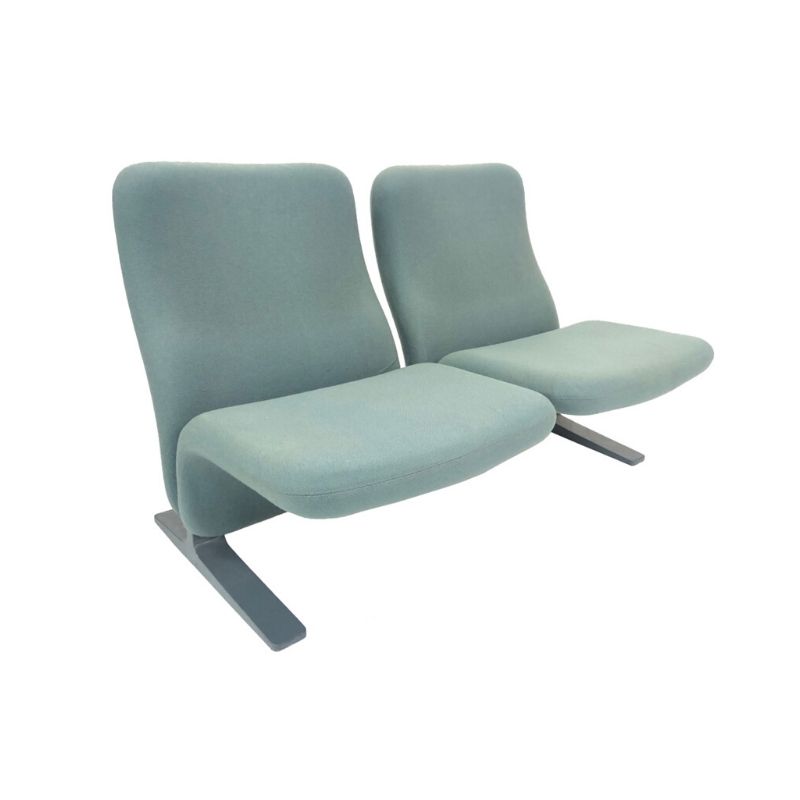Ah...ic. Thank you.
so,...
Ah...ic. Thank you.
so, the designer had a last name for a first name, and just happens to spell it 1 letter different from a steel wholesale company that did business at the same time that this designer was making this chair...?
Possible that if this was not a major seller ( I suspect it had a limited printing, with limited reprintings)... many typo's may exist, and unless the book has several more pressings, those initial typo's and editing mistakes would stay around.
Also... there is another possibility. Nelson is known for beliving one name should be associated with a piece...and that the actual individual who designed is not as important as being known as the company or entity behind the piece. It is said about him that "in the consumer world, credit should be given to the firm, not the individual" (wikipedia on george nelson)
In either case... it seems likely that George Nelsons book does not credit the individual who created the "olsen" chair. Be this by intention, or mistake, given the sentiment that Nelson is said to have had had regarding acknowledgement of individual designers, I'm having a harder time believing that a designer named "odelberg olsen" even existed, much less designed this "olson/olsen" chair... and even then to strech that further, and say "olsen is the likely designer for the rectangular back chair"...
things just arn't adding up.
Maybe Nelson had a ghostwriter for his book. It seems his name is associated with some furniture designs that are now widely (if quietly) acknowledged as done primarily by other designers working under him. Obviously, if some designs he was willing to associate himself with to take some credit, whats to say such a busy man wouldn't "subcontract out" sections of writing this book to other people?
No idea if the rectangle back task chair is prouve... but I'm still thinking french, by a french designer. Unless someone has more insight into the "orleans" label.
P.S. in the book "chairs" by Nelson...on the other pieces in the book...does he usually credit just the maker? or does he more often credit an individual as the designer? or does he credit both? that at least could give some contextual clues as to how he prioritized and conveyed the information published in the book.
questions... and a thought.
Also, does anyone know what book this is?
http://i1066.photobucket.com/albums/u406/vintageplus1/prouve-chairs-unkn...
it shows several prouve chairs... i'm wondering if anyone knows the book title (or if not a book, the title of the publication?) , and if so, if it was published before the taschen book of 1000 chairs? or is it the taschen book of 1000 chairs...just in french??
Do any of these books give their reference sources? Taschen, the french publication in the pic... etc?
Finally... I think what sticks out the most in this thread is the attribution of this chair to "Nordiska Kompaniet" by Frances Perkins, who represents Galerie Patrick Seguin. Unless Nordiska K. has their own private label that they also use on furniture that they offer, this statement makes no sense. And if they DO have their own private label attached to some furniture (or have in the past), how does this explain the "orleans" label?
And most of all, this would seem like a pretty significant mistaken assumption of attribution by a representative of Galerie P.S., which is seen by many as a leading authority on prouve, and by extention, early 20th century industrial design in general.
They credit this chair, which many others credit to prouve (any earlier attributions than the taschen 1000 chairs book would be MOST helpful here...) to a department store as the designer? This seems either like a significant mistake, or a sarcastic "joke"
And to THE_BELOVED - no idea if your still around, and please, I hope I don't offend you, but how well do you know your french dealer? and this representitive of the Galerie P.S.? is it possible they were sarcastically blowing you off? do they have a machiavellian streak in them? Possibly to prevent you from buying it and/or bidding up the price while they pick it up without having to compete with you?
They say it's not prouve, ok, sure. maybe so. But it's designed by a department store? and again...the orleans label...
I'm SURE there is someone out there who knows exactly how this all ties together. or at least, enough of it so the possibilities can be reduced, and/or accurately determined to be relevent or irrelevent.
Just hope they read and reply to this thread!
More on NK here.
More on NK here.
http://modernism101.com/products-page/industrial-design/triva-stolar-fat...
Ok, cool... one piece to the puzzle.
Jesgord, thanks for posting that up. I think it's safe to say that with the contoured back chair, NK DID at very least brand themselves onto the piece. Whether they were part of the design and/or manufacturing process is still unknown, but that's great that there IS something definative regarding their involvment with 1 of the 2 chairs we are discussing. So thanks for that.
And, it also solidifies the possibility that the other chair, with the rectangular backrest, COULD have been involved with NK. At very least we know that they do have a history of being willing to brand their name on some pieces they sell.
Would love to know what extent NK involves itself with it's products. Is it simply a cobranding? Or does it actually involve itself with the manufacturing and/or initial design of these products?
And of course the "orleans" tag. Anyone seen this tag before on anything?
What about other books that were published before taschen 1000 chairs book, that mention the rectangular back chair, or the orleans tag?
I'm still voting french with the rectangular back chair... though at this point, anything that provides insight into the unknowns here is good.
No, I don't have this chair, ...
No, I don't have this chair, but I have been planning to buy the rectangular back chair...the one with the "orleans" label on the bottom.
Not that specific one mind you, but I've seen this style up before, and before I put down $800-$1500 for the chair, I would like to know more about it.
I will probably get it regardless, because I just love the styling, but... well, what can I say. I must get some significant satisfaction out of knowing about the chair, and it's more exciting to me if a furniture piece has a more historically significant lineage.
And yea, I think you're right about the NK chair (the contoured back & seat chair). At very least, it's safe to say it's been brought to market by NK.
What I really wanted to know was the rectangular back chair. I commented on the other just because I was skeptical of the seemingly contradictory or semi-contradictory claims that various people were bringing up. When I started fact checking... it made even less sense.
Which brings me back to why I first dropped in: rectangular back chair - only label I've ever seen on any example of it is this "orleans" label. I want to know more about this particular chair. Designer, manufacture, who or what is "orleans", etc.
This post is exactly why I...
This post is exactly why I love Design Addict.
A listing for this (or a similar) chair popped up on eBay today, so naturally I ran over here to check it out... I think my bank account is safe for another day!
http://www.ebay.co.uk/itm/1940-Jean-prouve-chaise-task-chair-knoll-eames...
Yea.... this listing is one...
Yea.... this listing is one of the reasons i'm asking about the chair. got sidetracked a bit discuss the other chair (contoured back and seat). but this chair... the black one in france with the rectangular back. Is it also NK? or is it something/someone else?
I have a friend who recently sold 2 of them, has one left... I told him to hold it for me. I know for fact he imported them from france about a year ago (he took a vacation) So, i'm trying to figure out exactly what/who this particular chair is by.
This chair has a much more "prouve-esque" asthetic. The seat isn't contoured, just bent a bit at the front (like his standard chair and others). the bolting is directly attached from the underside of the seat, into the seat. no secondary or additional pieces to "connect" the seat to the base. The locking mechanism for height and backrest angle are VERY simple, but clearly attached by hand... they lack the "finished" production level of machine, mass produced soldiering, and the way the chair seat is locked vertically is incredibly simple, but rather ingenious:
there is a "groove" that runs almost the length of the post. The post slides up and down in the 4 legged base. If you remove the chair from the 4 legged base, and look at the peg, This "groove" actually is cut DEEPER into the metal as the chair would be adjusted higher.
In effect, as the seat is raised up, and then the round knob is tighted to hold it into place... the reason it doesn't drop back down when you sit on it is because the groove gets more shallow as the seat drops down on the 4 legged base. In other words, it creates a wedge that gets wider as the seat goes lower... thus preventing the seat from "collaspsing downward" when it is sat on.
So, it's an incredibly simple, yet elegant design. no "notches", no "multi piece locking mechansim". Simply a knob that tightens into the peg, and a peg that is cut with a sloped groove, so that the groove creates a wedge by virtue of it being continually cut deeper into the peg as the peg slides lower on the chair.
it's very very simple. nothing like the "contoured backed" chair that is made by NK.
It really stands out how simple but elegant this chair is designed and operated, so this is the one I really want to know about.
IF it is NK...does anyone have a stamp or something that would verify that?
and whats up with the orleans tag on the bottom of the example above?
If you need any help, please contact us at – info@designaddict.com









